#UNOOSA
Text
Meet UNOOSA and COPUOS at UNHQ.
Right after the Soviet Union launched Sputnik in 1957, UNOOSA, the UN Office for Outer Space Affairs, was established and has since been monitoring developments across more than 77 successful lunar missions as well as other journeys into space. These days, the UN space agency is getting ready to host the UN Conference on Sustainable Lunar Activities in Vienna in June.
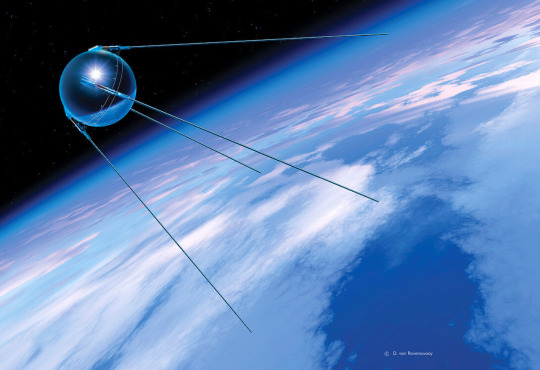
Watch UNOOSA’s latest youth competition winners here.
In 1959, the General Assembly created a committee to govern the exploration and use of space for the benefit of all humanity for peace, security and development.
Instrumental in creating the five treaties and five principles of outer space, the Committee on the Peaceful Uses of Outer Space (COPUOS) has mandated duties that include keeping pace with rapid advances in space technology.

© NASA - A view of the Earth and a satellite as seen from outer space.
#principles of outer space#outer space treaties#journeys into space#international day of human space flight#12 april#supnik#lunar missions#monitoring development#COPUOS#United Nations Office for Outer Space Affairs#UNOOSA
2 notes
·
View notes
Text
Get the UNOOSA sheets of stamps commemorating Human Space Flight!
On 24 April, the United Nations Postal Administration (UNPA) issued six new stamps and three souvenir sheets to celebrate human achievements on planet Mars.

0 notes
Text

It's October 4th, the beginning of 🔭 World Space Week. The World Space Week Association (WSWA) sponsored the first “Spaceweek” in 1980 as a celebration of the first Moon Landing. From the very beginning of the Space Age, the United Nations (UN) recognized that outer space adds a new dimension to our existence. In 1999, the UN officially declared 04-10 October of every year as “World Space Week” to celebrate the contributions of space science and technology to the betterment of the human condition.
Space science and technology and their applications are increasingly being used to support a wide range of UN activities. At least 25 UN entities and the World Bank routinely use space applications to make important and sometimes essential contributions to the achievement of the UN’s Sustainable Development Goals (SDGs). Of the SDG’s 169 target objectives, 65 directly benefit from Earth observation satellites and related technologies.
Space exploration and space-based Earth observation are helping to drive positive change for our planet by identifying land, air, and water pollution levels; monitoring deforestation activities; measuring climate change effects; and supporting agriculture in developing nations to name a few. Beam me up, Scotty! ☮️ Live long and prosper… Jamiese of Pixoplanet
#jamiese#pixoplanet#un#united nations#world space week#world space week association#wswa#space week#moon landing#science#technology#human condition#women in space#space 4 women#unoosa#17 sustainable development goals#space science#space technology#space innovation#space exploration#space#sdgs#astronomy#esa#space travel#jwst#hubble#mars#satellite#curiosity
0 notes
Note
Hi 👋🏼
apologies if you've answered this before but what exactly is your job? cause it sounds fun af!
usually i just say i work in space law but you did ask what exactly my job is so: i am in the space diplomacy department of my country's government working on space sustainability law and policy. and i know what you're thinking: that's a bunch of words! let me explain.
basically, the united nations have a special body dedicated to regulating outer space exploration with the very short and snappy name committee for the peaceful use of outer space (COPUOS). it meets three times a year in vienna, and discusses everything from space trash to moon mining to satellite signals to launching rockets. and i work for one delegation to that committee! my main task is looking at how space technology can be used to improve life on earth and further sustainable development, and how international and national policy decisions can make this use of space more effective. if you want to know more about how exactly that looks like, the united nations office for outer space affairs (UNOOSA) has a website dedicated to the topic:
Space4SDGs!
so basically, i work in space which is cool as fuck, but i do paperwork which most people would consider the lamest kind of space work but don't be fooled! it's the coolest fucking paperwork there is
68 notes
·
View notes
Text
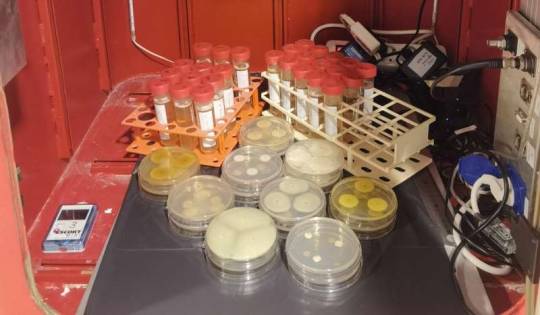
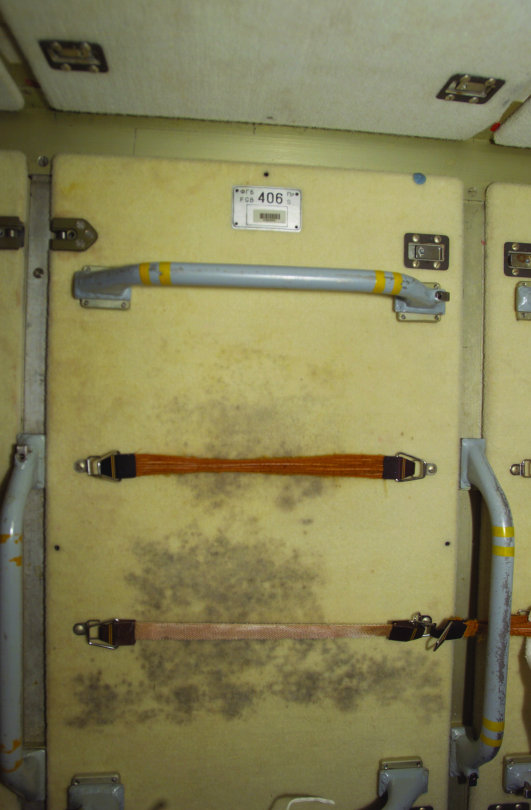
Turning up gravity for space fungi study
Fungi in space have been a plot point in Star Trek: Discovery, but they are also a very real problem for astronauts and space stations. United Nations co-sponsored testing by a team from Macau in China subjected fungi to hypergravity with ESA's fast-spinning centrifuge.
A team from the Astrobiology group of the State Key Laboratory of Lunar and Planetary Sciences at the Macau University of Science and Technology of Macau—a special administrative region of China—used ESA's Large Diameter Centrifuge at the ESTEC technical center in the Netherlands to test the growth of fungal colonies under double normal Earth's gravity.
Up until now the Macau team has been making use of 3D clinostats—otherwise known as random positioning machines, which continuously shift their orientation of the gravity vector to simulate microgravity conditions—to test how fungi respond to weightlessness.
Access to the LDC was arranged through HyperGES, part of the Access to Space for All initiative of the United Nations Office of Outer Space Affairs, UNOOSA.
The LDC is an 8 m-diameter four-arm centrifuge that gives researchers access to a range of hypergravity up to 20 times Earth gravity for weeks or months at a time.
At its fastest, the centrifuge rotates at up to 67 revs per minute, with its six gondolas placed at different points along its arms weighing in at 130 kg, and each capable of accommodating 80 kg of payload.
Their two weeks using the LDC enabled the Macau team extended testing into hypergravity conditions, supported by ESA's Life Support & Physical Sciences Instrumentation Laboratory team.
Fungal species were grown until full mature grown was achieved, and then examined to check for genetic or "phenotypic" stress reactions.
Next, one of the selected fungal species underwent a second generation of exposure to hypergravity to see if any stress reactions or alterations were maintained, or whether cumulative effects might be observed. As part of the analysis, selected samples were also analyzed under a scanning electron microscope at ESA's nearby Materials and Electrical Components Laboratory.
"The study of fungi in space is called 'astromycology,' a subset of astrobiology," explains Marta Filipa Simões, leader of this project from Macau University of Science and Technology.
"The ship's engineer in Star Trek: Discovery is an astromycologist, but this is indeed a real field of study and an increasingly important one. Fungi have a long history of making it into space and can have serious impacts once they are there."
The Russian space station Mir experienced fungal contamination as it aged. Portholes became obscured while plastics and metals were corroded, triggering malfunctions in turn—and wider concerns for the station structure.
Prof. Simões adds, "The International Space Station has had its own issues in rooms where crewmembers exercise, with higher humidity leading to fungal contamination on the walls. They have to do a lot of regular cleaning and disinfecting to prevent it.
"In a closed system like the ISS, any time you have the growth of biofilms, which fungi use to stay in place, you can have problems. This can be a serious concern because fungi might also trigger infections or allergic responses in astronauts, whose immune systems are themselves depressed in space. Conversely many fungal species appear to have their growth promoted in microgravity conditions—it is part of our present study to try and better understand why."
Some fungi are always going to make it to space, with hardy fungal spores able to adhere to all sorts of surfaces and tissues, such as the human body. Spacecraft cleanrooms are never pristine in practice; biological surveys show they are home to fungi and other microorganisms.
"We are never going to be able to get rid of fungi entirely as we venture into space, so we need to understand them," says André Antunes, part of the research team of Macau University of Science and Technology.
"In addition, they offer positive opportunities as well as risks. Down on Earth fungi are employed to make food—such as yeast for fermentation—as well as medicines, chemical enzymes for industry as well as metal nanoparticles used in numerous fields.
"For future space settlement they might be harnessed to cover different types of needs,, including recycling, or mining essential minerals out of planetary surfaces. These are seen as essential in helping to reduce costs and ensure sustainability of crewed space exploration."
The next HyperGES team to perform experiments on the LDC comes from Mahidol University, Thailand. They team will investigate how watermeal—the smallest flowering plant on Earth, even smaller than the more familiar duckweed—responds to changing gravity levels to assess its usefulness for space-based life support systems.
TOP IMAGE....Fungi species being prepared for exposure to hypergravity inside a spinning gondola of ESA's Large Diameter Centrifuge. Credit: UNOOSA
LOWER IMAGE....Fungi observed on the ISS, growing on a panel of the Russian Zarya Module where exercise clothes were hung to dry. Credit: NASA/ESA
10 notes
·
View notes
Text
Portugal and UNOOSA present the Lisbon Declaration for Outer Space
lisbon_declaration_on_outer_spaceDescarregar
The Lisbon Declaration for Outer Space was presented at the Management and Sustainability of Space Activities Conference, organised by UNOOSA and the Portuguese Space Agency. For the UN Under-Secretary-General for Policy, Guy Ryde, the dialogue in Portugal “will impact the way forward because we are now in a unique position where preparation has met…

View On WordPress
0 notes
Text
Portugal y la ONU debaten en Lisboa el futuro de la sostenibilidad espacial
Recopilación y opiniones de:Ariadne Gallardo Figueroa
Declaración de Aarti Holla-Maini, abogada, economista y experta espacial británica. Desde 2023 es directora de la Oficina de las Naciones Unidas para Asuntos del Espacio Ultraterrestre (UNOOSA).
“A diferencia de la crisis gradual del cambio climático, la acumulación de desechos espaciales podría superar rápidamente nuestra capacidad de…
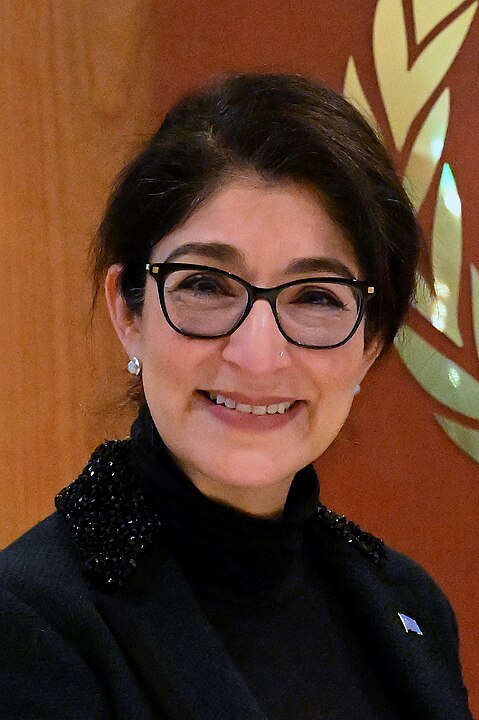
View On WordPress
0 notes
Text
UNOOSA, la giornata internazionale dell'Uomo nello Spazio e la PACE
L’inizio dell’era spaziale per l’umanità
L’Assemblea Generale, nella risoluzione A/RES/65/271 del 7 aprile 2011, ha dichiarato il 12 aprile Giornata internazionale del volo spaziale umano “per celebrare ogni anno a livello internazionale l’inizio dell’era spaziale per l’umanità, riaffermando la importante contributo della scienza e della tecnologia spaziale nel raggiungimento degli obiettivi di…
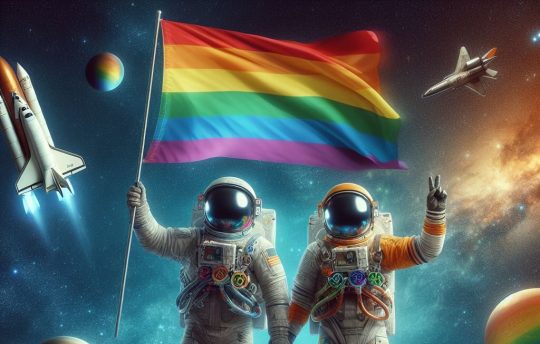
View On WordPress
0 notes
Text
0 notes
Text
Bolivia’s hypergravity blood cell test for astronaut health
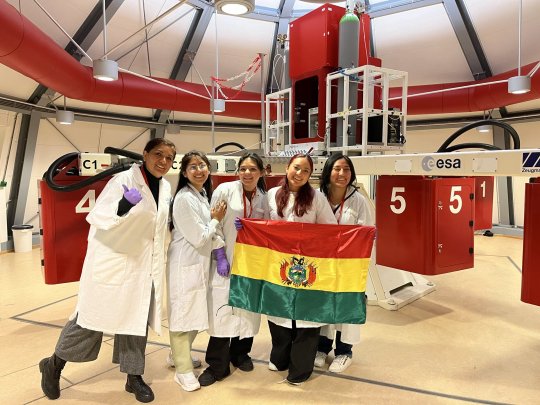
Bolivia’s hypergravity blood cell test for astronaut health.
An all-female team from Bolivia is the latest international group to use ESA's hypergravity-generating Large Diameter Centrifuge, with access sponsored by the United Nations and ESA. The researchers are looking into whether the high gravity levels experienced during rocket launches contribute to the anemia that many astronauts suffer from in space.
Based at ESA’s ESTEC technical canter in the Netherlands, the LDC is an 8-meter-diameter, four-arm centrifuge that gives researchers access to a range of hypergravity up to 20 times Earth gravity for weeks or months at a time.
Access to the LDC was arranged through HyperGES, part of the Access to Space for All initiative sponsored by ESA and the United Nations Office of Outer Space Affairs, UNOOSA.
At its fastest, the centrifuge rotates at up to 67 revs per minute, with its six gondolas placed at different points along its arms weighing in at 130 kg, and each capable of accommodating 80 kg of payload.
ESA's Large Diameter Centrifuge
The five-strong all-female team from Universidad Católica Boliviana ‘San Pablo’ in La Paz, Bolivia, have spent two weeks studying the effects of hypergravity on red blood cells.
Astronauts are known to experience numerous adverse health effects while in space. Among them – observed since the earliest days of orbital flight – is anemia, which can cause dizziness and weakness.
Recent research shows this anemia is linked to ‘hemolysis'—in’ – in plain words that red blood cells are destroyed at a much higher rate than the usual recycling of old and damaged cells. This finding became the starting point for the team’s research.
Preparing_samples_for_testing
Team leader Dr. Georgina Chávez explains: “As part of a biology class I assigned a very simple task which many people might do in school: testing how osmosis affects red blood cells. By putting low-salinity ‘hypotonic’ solution in the fluid surrounding the red blood cells, then water moves into the cells and they eventually burst. We saw the paper in Nature on the hemolytic anemia suffered by astronauts, and the parallels with our testing raised our interest. It is possible that hypergravity exposure causes cellular membranes to become fragile, leading to hemolysis.
Red_blood_cells_undergoing_hemolysis_after_hypergravity_exposure
“What is well known is that the distribution of body fluid changes in weightlessness, so this might promote the same kind of destruction of red blood cells. But most of the existing studies have been done in microgravity. We thought, well actually astronauts go through two big bodily changes during spaceflight: to make it into microgravity they first experience a brief but intense period of hypergravity. So we decided to investigate the effects that this initial phase might have in terms of leading to hemolysis in space later.”
Samples_placed_in_LDC
For hypergravity testing the team prepared various levels of hypotonic solutions to perform ‘osmotic fragility testing’ on samples that were exposed to 7.5 and 15 Earth gravities as well as normal gravity as a control. The hypergravity spins continue for differing test periods of 10 minutes, 30 minutes and 60 minutes, with samples stored at temperatures of 25°C and body temperature.
“It typically takes a few minutes of high-gravity rocket flight to make it into orbit,” notes team member Daira Quenta. “We want to see how the amount of time spent in hypergravity might make a difference.”
Hypergravity_centrifuge_in_motion
The team had been inspired by previous Bolivian participation in other UNOOSA programs, notably the DropTES (Drop Tower Experiment Series) which enables international researchers to utilize the ZARM drop tower in Bremen, Germany, with a 146-m shaft for brief microgravity testing.
“We made the connection – if they can do it, we can do it. The opportunity got us motivated.”
Team member Marcia Carrasco comments
“We’re training to become biochemistry and bioprocess engineers, which is really quite vocational,” explains team member Belen Flores. “This career encompasses a wide range of options, we might for instance end up working for the pharmaceuticals sector or food companies. We don’t typically have the chance undertake scientific investigations like this, so this has been exciting.”
“We are an all-female team, which wasn’t intentional, but they are all brilliant students, and it’s fair to say females are a bit more organised!”
Dr. Chavez adds
“We didn’t think too much about gender at the time, but we have been part of some important initiatives subsequently, including Matilda, an organisation encouraging female Latin America students to go into STEM subjects. And we’ve been featured on Pica, which is a popular TV show for Bolivian teenagers, raising a lot of interest.”
Team member Natalia Agramont says
Source: ESA
Read the full article
0 notes
Text
Festival entitled "Yuri Gagarin - the Hero of Our Time:", dedicated to the 90th anniversary of the birth of Hero of the Soviet Union.
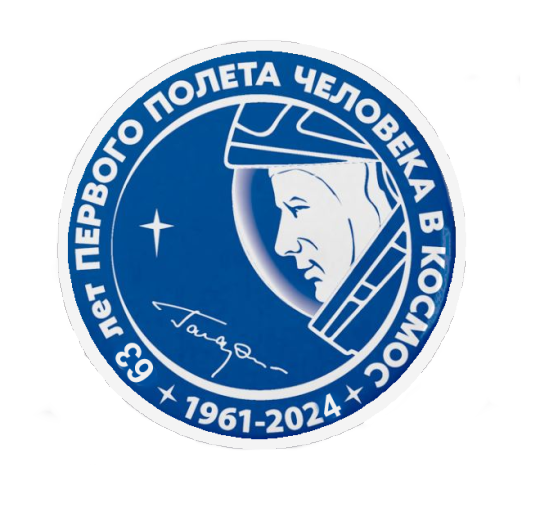
Today, on April 19, 2024, the Reserve Center of the Presidential Library in Moscow hosted an International Scientific and Educational festival on the topic: "Yuri Gagarin - the Hero of Our Time", dedicated to the 90th anniversary of the birth of Hero of the Soviet Union, test pilot Yuri A. Gagarin. The festival is organized by the autonomous non-profit organization "Unikalny mir" with the support of the administration of Vologda region.
The event was attended by representatives of the State Duma of the Federal Assembly of the Russian Federation, the Moscow City Duma, representatives of the CIS Executive Committee, Russian cosmonauts, as well as regional public and political figures.
The main purpose of the festival is to present Yuri A. Gagarin as a hero of our time, as well as to tell about outstanding Soviet scientists who made a significant contribution to space exploration and the development of related sciences and industries in the USSR.
During the event, the modern achievements of the Russian Federation in the field of cosmonautics (including manned one) development, as well as the use of virtual reality in the process of cosmonaut training were disscussed. Also, topics of promising Russian developments and techniques in the field of engineering and technological education were considered.
At the same time, the festival included in-person visits to Armenia, Kyrgyzstan and Tajikistan by test cosmonauts of the Roscosmos detachment, who took part in the festival in an online format from these countries.
In Dushanbe, the capital of Tajikistan, Hero of the Russian Federation, test cosmonaut Peter Dubrov visited the Gagarin Russian-Tajik School, where he held a Gagarin lesson and told students and teachers about his experience of training and space flight. In Bishkek, the capital of Kyrgyzstan, Hero of the Russian Federation, test cosmonaut Sergei Korsakov held a meeting with students of the Kyrgyz Aviation Institute. In Yerevan, the capital of Armenia, test cosmonaut Harutyun Kiviryan held a lesson at the Armenian University for students from Armenia, Iran and Georgia.
The festival is aimed at developing and strengthening cooperation between the CIS countries in the field of engineering and technological education, as well as increasing the interest of young people in research, engineering developments in the field of astronautics and Earth exploration.
#engineering education#technological education#young people in research#engineering developments#astronautics#yuri's night#human spaceflight#outer space#first human mission to leave earth’s atmosphere#first human in space#firstinspace#unoosa#roscosmos#Unikalny mir#state duma#russia
0 notes
Text
Aditya-L1: India successfully launches its first mission to the Sun
India has more than 50 satellites in space and they provide many crucial services to the country, including communication links, data on weather, and help predict pest infestations, droughts and impending disasters. According to the United Nations Office for Outer Space Affairs (UNOOSA), approximately 10,290 satellites remain in the Earth’s orbit, with nearly 7,800 of them currently…

View On WordPress
0 notes
Text
"Unveiling the Unconquered: India Breaks Barriers with Historic Sun Mission, Aditya-L1"
India currently has over 50 satellites in space that provide essential services to the country. These services include communication links, weather data, and the ability to predict pest infestations, droughts, and impending disasters. The United Nations Office for Outer Space Affairs (UNOOSA) reported that there are a total of 10,290 satellites in Earth’s orbit, with approximately 7,800 of them…
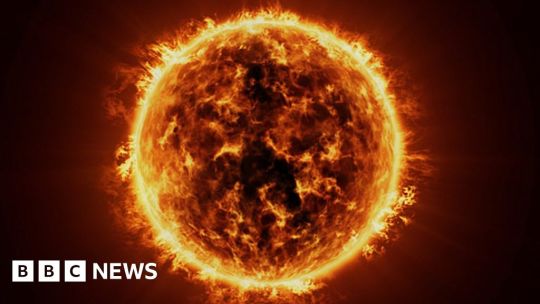
View On WordPress
0 notes
Text
"Unveiling the Unconquered: India Breaks Barriers with Historic Sun Mission, Aditya-L1"
India currently has over 50 satellites in space that provide essential services to the country. These services include communication links, weather data, and the ability to predict pest infestations, droughts, and impending disasters. The United Nations Office for Outer Space Affairs (UNOOSA) reported that there are a total of 10,290 satellites in Earth’s orbit, with approximately 7,800 of them…

View On WordPress
0 notes
Text
"Unveiling the Unconquered: India Breaks Barriers with Historic Sun Mission, Aditya-L1"
India currently has over 50 satellites in space that provide essential services to the country. These services include communication links, weather data, and the ability to predict pest infestations, droughts, and impending disasters. The United Nations Office for Outer Space Affairs (UNOOSA) reported that there are a total of 10,290 satellites in Earth’s orbit, with approximately 7,800 of them…
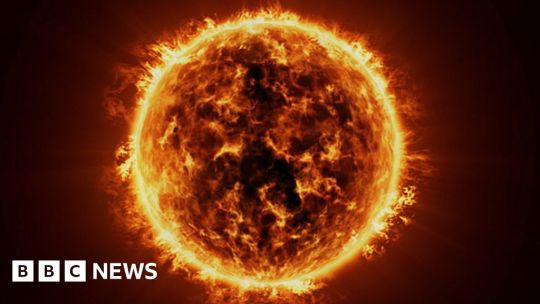
View On WordPress
0 notes
Text
Portugal and United Nations co-organise conference dedicated to Management and Sustainability of Space Activities
The Conference on “Management and Sustainability of Outer Space Activities” takes place in May 2024 and comes in preparation for the United Nations’ “Future Summit: Multilateral Solutions for a Better Future”.The Portuguese Space Agency, together with the United Nations (in this case through UNOOSA, the United Nations Office for Space Affairs), is organising a conference on the Management and…
View On WordPress
0 notes